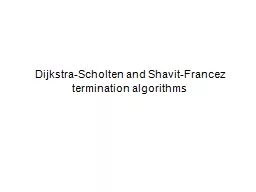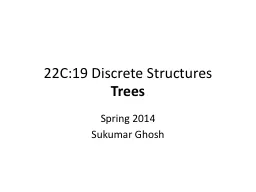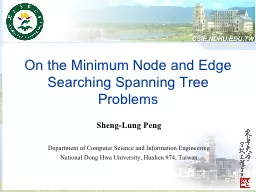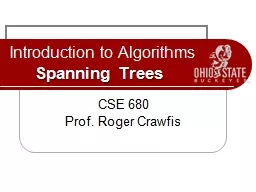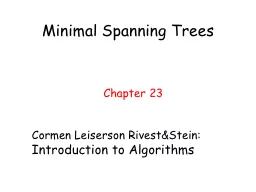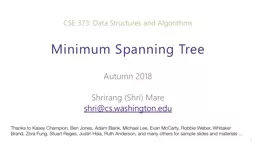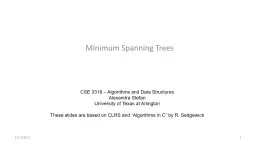PPT-Eager Prim Dijkstra Minimum spanning tree
Author : pamella-moone | Published Date : 2019-06-20
Minimum spanning t ree MST is a spanning tree whose weight is not larger than any other spanning tree Prim vs Kruskal Prim At each time add an edge connecting
Presentation Embed Code
Download Presentation
Download Presentation The PPT/PDF document "Eager Prim Dijkstra Minimum spanning tre..." is the property of its rightful owner. Permission is granted to download and print the materials on this website for personal, non-commercial use only, and to display it on your personal computer provided you do not modify the materials and that you retain all copyright notices contained in the materials. By downloading content from our website, you accept the terms of this agreement.
Eager Prim Dijkstra Minimum spanning tree: Transcript
Download Rules Of Document
"Eager Prim Dijkstra Minimum spanning tree"The content belongs to its owner. You may download and print it for personal use, without modification, and keep all copyright notices. By downloading, you agree to these terms.
Related Documents



